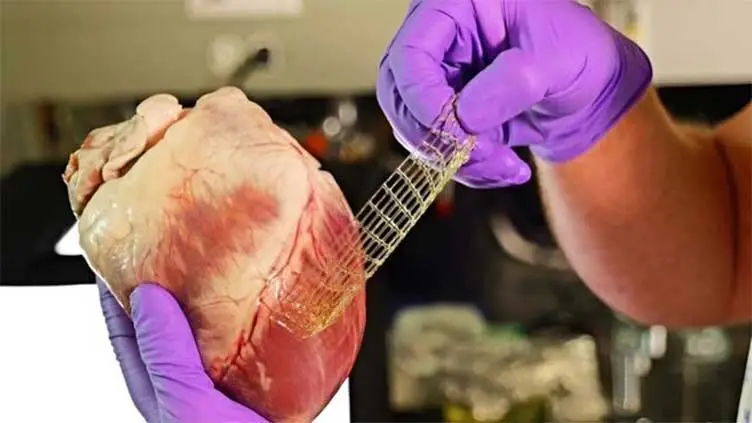Flexible 3D-Printed Patch Can Help Repair Damaged Hearts, Tissues The patch forms spontaneously and could potentially serve as support for heart tissue. CLEAR, short for Continuous-curing after Light Exposure Aided by Redox initiation has its roots at the University of Colorado Boulder and the University of Pennsylvania – was established without any preparation to supplement current 3D printing procedures. The far-reaching and fundamental consequences of this development could revolutionise the approach to treating tissue injuries or even open up entirely new horizons for medical applications.
The Cutting-Edge CLEAR Method
The CLEAR approach is a significant step change for 3D printing technology. However, it turns out that even some of the oldest and most robust 3D printing processes cannot provide fabricated materials which are both firm enough to serve functionally as a biomaterial and flexible/stretchy or wearable enough for biomedical applications. This novel technique, as particular in its flexibility and toughness of the material it provides that is necessary for treating soft tissues such as found heart injuries where a lack damage response imparts high ratemyprofessor erosion.
CLEAR is able to produce materials that mirror the properties of human tissue and differ from traditional 3D-printed hydrogels, which may be too weak or stiff.
That comes through the intricate entanglement of long molecules in the printed materials, a philosophy already taken from nature like this convergence found in worms. The result is a material that can withstand the constant movement of an active body, like a beating heart or running joint, while also accommodating to fit individual patients.
Innovative Applications and Benefits
This new technology has a lot of possible applications which we will get to know soon enough, and all the more exciting. The researchers have a whole suite of innovative biomaterials in mind that could revolutionise patient care, such as:
Bandages infused with drugs for the heart: Bandages that could deliver medications directly to the heart improving healing and recovery.
Cartilage Patches-Cartilage patches are flexible and can improve the function of joints by repairing damaged cartilages, also reduces pain.
Sutures without needles: Such innovation would make suture usage needless, and thus the surgical procedure easier to complete and shorter recovery time.
The potential of this is really ability to grow new tissue where it might be needed without rejecting that tissue, said Jason Burdick, senior author on the study.
Cartilage and cardiac tissues share a common limitation, they simply do not repair themselves very well. Once they break, there is no putting them back together. If we can create new materials that heal this kind of tissue, and if they are effective at doing so in patients, it will be a game changer.
Rigorous Testing and Environmental Benefits
These new materials have been subjected to a range of tests measuring durability and flexibility. To test the materials, a bicycle was actually rolled across a sample to simulate things like stretching and bearing weight. The materials showed drastically improved toughness, greater than what traditional 3D printing methods allow. They also formed a strong bond with animal tissues and organs, proving they were fit for practical use in the clinic.
The CLEAR method is also green. This eliminates the hardening phase which is both energy intensive and resource-hungry in conventional 3D printing, rendering this a more sustainable method for creating highly engineered medial materials.
Future Prospects and Next Steps
This technicque has the potential of changing many things in future empowering this team. They have also filled a provisional patent and are going to continue work researching how these materials interacts with human tissues The ability to repair heart lesions, stabilize slipped discs and conduct self-locking sutures is a huge step forward in medical science.
If you wish to check out the best medical inventions along with 3D printing technologies then websites such as Amazon might trap a lot of money on their online sources especially for many commercially usable personnel and research oriented printers. Science and other top journals also offer comprehensive reports on these trends, attractive to professionals seeking news of the latest technological breakthroughs
Conclusion
A cutting edge formula of the CLEAR 3D printing approach is an outstanding thing in the field of medical professional technology. These materials, which can be transformed into flexible and tough structures that mend damaged tissues, have a wide-array of potential applications in patient care – from drug delivery to bio-sensors. This innovation is likely to have a huge impact with further ongoing research, and as more applications are developed offering new hope and improved healing for patients across the globe.


